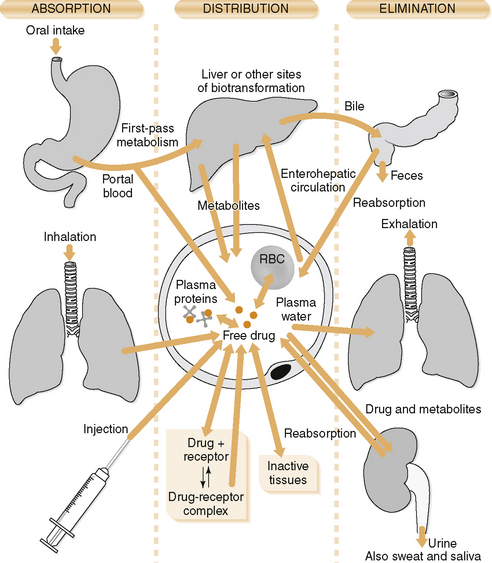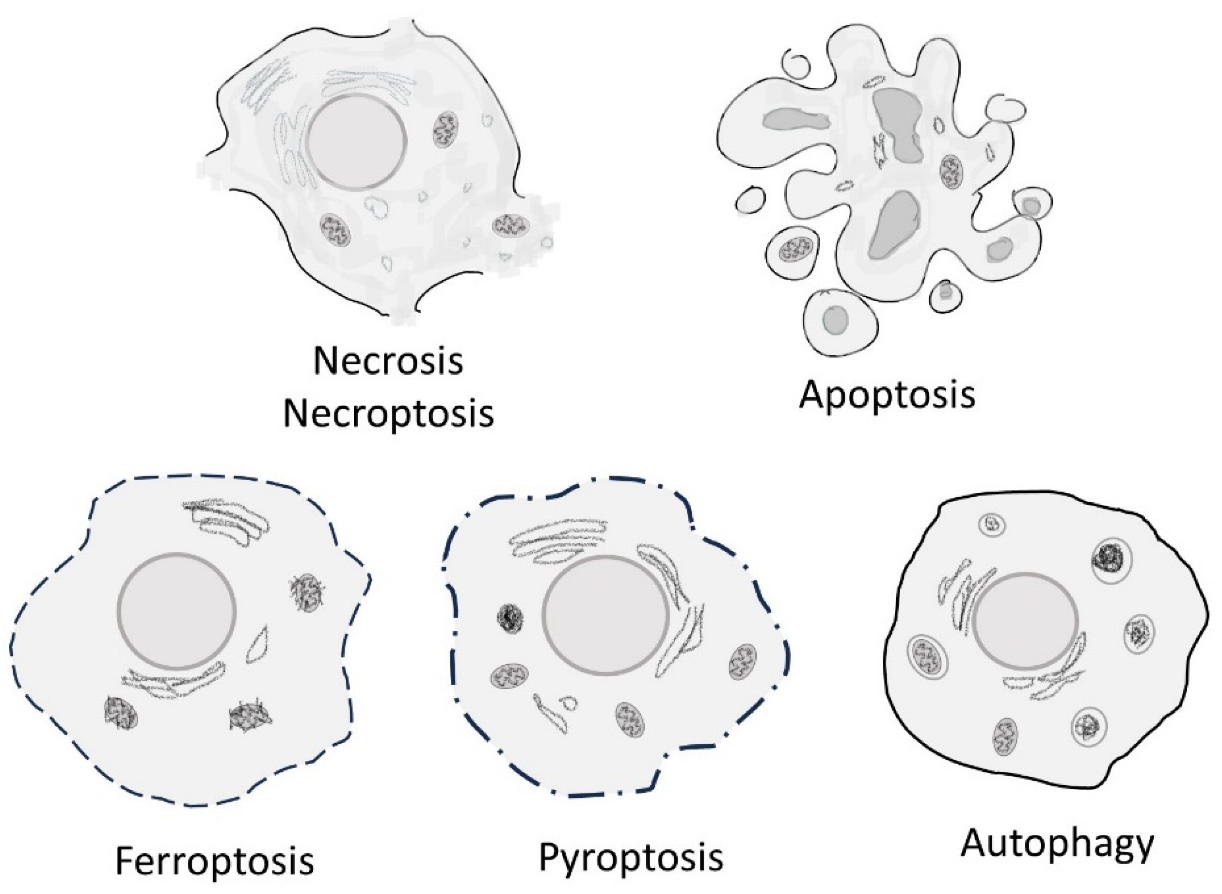Which phase of pharmacokinetics is affected by the first pass effect?
Excretion
Metabolism
Distribution
Absorption
The Correct Answer is D
Choice A: Excretion
Excretion is the process by which drugs and their metabolites are eliminated from the body, primarily through the kidneys (urine), but also via bile, sweat, saliva, and other routes. While excretion is a crucial phase of pharmacokinetics, it is not directly impacted by the first pass effect. The first pass effect primarily involves the metabolism of a drug before it reaches systemic circulation, which occurs prior to the excretion phase.
Choice B: Metabolism
The first pass effect, also known as first-pass metabolism or presystemic metabolism, significantly impacts the metabolism phase of pharmacokinetics. This phenomenon occurs when a drug is metabolized at a specific location in the body, such as the liver or gut wall, before it reaches systemic circulation. As a result, the concentration of the active drug is reduced, affecting its bioavailability. The liver is the primary site for this metabolic process, where enzymes break down the drug, potentially leading to a significant reduction in its therapeutic effect.
Choice C: Distribution
Distribution refers to the process by which a drug is transported from the bloodstream to various tissues and organs in the body. This phase is influenced by factors such as blood flow, tissue permeability, and binding to plasma proteins. However, the first pass effect does not directly alter the distribution phase. Instead, it affects the amount of drug that enters systemic circulation, which in turn can influence the extent of distribution.
Choice D: Absorption
Absorption is the process by which a drug enters the bloodstream from its site of administration. This phase is crucial for determining the onset of a drug’s action. While the first pass effect occurs after absorption, it does not directly change the absorption phase itself. Instead, it affects the drug’s concentration after it has been absorbed and before it reaches systemic circulation.

Nursing Test Bank
Naxlex Comprehensive Predictor Exams
Related Questions
Correct Answer is A
Explanation
Choice A Reason:
Norepinephrine is a key neurotransmitter released by the sympathetic nervous system during the “fight-or-flight” response. It plays a crucial role in preparing the body to respond to stress by increasing heart rate, blood pressure, and blood flow to muscles, as well as dilating the airways. These physiological changes are essential for coping with acute stress.
Choice B Reason:
Cortisol is a hormone released by the adrenal glands in response to stress, but it is primarily associated with the hypothalamic-pituitary-adrenal (HPA) axis rather than the sympathetic nervous system. While cortisol contributes to the body’s overall stress response by increasing blood sugar levels and suppressing the immune system, it is not the primary mediator of the acute “fight-or-flight” response.
Choice C Reason:
ACTH (adrenocorticotropic hormone) is a hormone produced by the pituitary gland that stimulates the adrenal glands to release cortisol. It is part of the HPA axis and plays a role in the body’s long-term stress response, but it is not directly involved in the immediate activation of the sympathetic nervous system.
Choice D Reason:
Glucagon is a hormone produced by the pancreas that raises blood glucose levels by promoting the breakdown of glycogen to glucose in the liver. While it can be involved in the body’s response to stress by ensuring an adequate supply of glucose, it is not a primary mediator of the acute stress response mediated by the sympathetic nervous system.
Correct Answer is A
Explanation
Choice A Reason:
Necrosis is the term used to describe the death of cells or tissues through injury or disease, particularly when it involves severe cell swelling, breakdown of organelles, and release of cellular debris. This process is typically uncontrolled and results from factors such as lack of blood flow (ischemia), toxins, or trauma. In the context of a heart attack, necrosis occurs due to the lack of oxygen and nutrients, leading to cell death and tissue damage.
Choice B Reason:
Apoptosis is a form of programmed cell death that occurs in a controlled and regulated manner. It is a natural process that helps maintain homeostasis by eliminating damaged or unnecessary cells without causing inflammation. Unlike necrosis, apoptosis involves cell shrinkage, chromatin condensation, and DNA fragmentation, but it does not result in the release of cellular debris.
Choice C Reason:
Adaptation refers to the changes that cells undergo in response to stress or adverse conditions to survive and maintain function. These changes can include hypertrophy, hyperplasia, atrophy, and metaplasia. Adaptation is a reversible process and does not involve cell death or the breakdown of cellular components.
Choice D Reason:
Pathologic calcification is the abnormal deposition of calcium salts in tissues. It can occur in areas of necrosis (dystrophic calcification) or in normal tissues due to hypercalcemia (metastatic calcification). While pathologic calcification can be associated with cell injury and death, it is not the primary process described in the scenario of a heart attack leading to cell death with severe swelling and breakdown of organelles.

Whether you are a student looking to ace your exams or a practicing nurse seeking to enhance your expertise , our nursing education contents will empower you with the confidence and competence to make a difference in the lives of patients and become a respected leader in the healthcare field.
Visit Naxlex, invest in your future and unlock endless possibilities with our unparalleled nursing education contents today
Report Wrong Answer on the Current Question
Do you disagree with the answer? If yes, what is your expected answer? Explain.
Kindly be descriptive with the issue you are facing.
